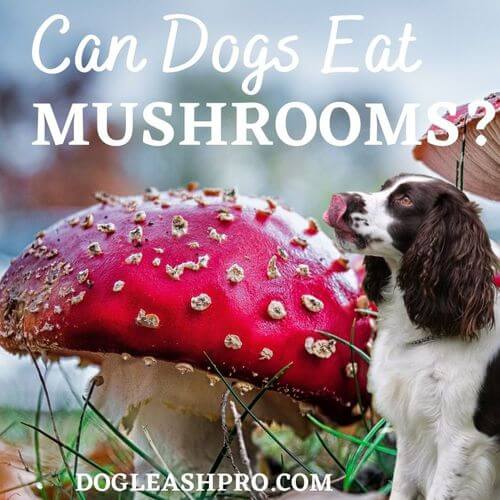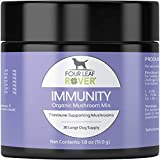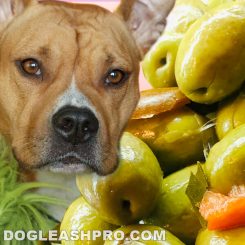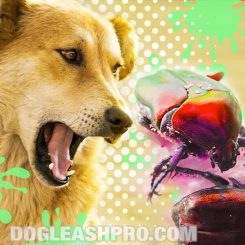
Last weekend, I decided to make Cream Of Mushroom Soup and ended up having a bowl of leftover raw Mushrooms. Before I could put it away, my Labrador Retriever stole a Mushroom and ate it. Having never encountered this before, I called my vet and asked, “Can dogs eat Mushroom?” Here’s what she had to say.
Can Dogs Eat Mushrooms? It depends on the types of Mushrooms. Some Mushrooms like the Portabella, Shiitake, and White button are safe for dogs to eat. Other Mushrooms like Gyromitra species (false morel), Amanita muscaria (fly agaric), and Clitocybe dealbata mushrooms are poisonous and are not safe for doggy consumption.
If you have a backyard full of Mushrooms and you allow your dogs to roam freely in the yard, you’ll want to monitor them closely. Some backyard Mushrooms may be poisonous and your canine companions can get sick from eating them. In this article, we’ll go over in detail which types of Mushrooms are safe or unsafe for doggy consumption.
Table of Contents
Can dogs have Mushrooms?
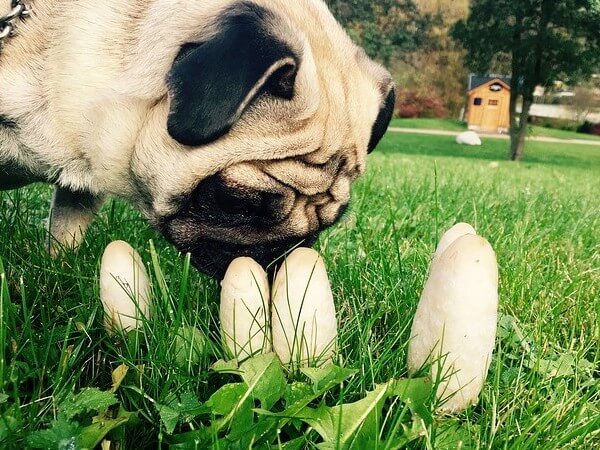
It depends on the types of Mushrooms. In truth, there’s not a simple yes or no answer to this question. If you’re wondering, “Can my dog have Mushrooms?” it really depends on which Mushrooms you’re referring to.
According to Harvard T.H. Chan School of Public Health, there are at least 12 popular Mushrooms around the world. They are:
- Portabella / Portobello Mushrooms.
- Cremini Mushrooms.
- Maitake Mushrooms.
- Button Mushrooms or Agaricus Bisporus.
- Hedgehog Mushrooms.
- Morel Mushrooms.
- Shiitake Mushrooms.
- Porcini Mushrooms.
- Lobster Mushrooms.
- Enoki Mushrooms.
- Chanterelle Mushrooms.
- Clamshell Mushrooms.
A good rule of thumb is that if the Mushroom in question is safe for us (humans) to eat, then it is also safe for doggy consumption too.
Dogs and Mushrooms
When it comes to feeding your dogs Mushrooms, you’ll want to make sure the Mushrooms are store-bought and organic. Organic Mushroom options are free of pesticides, toxins, and other toxic chemicals and compounds.
Below are several different types of Mushrooms you can find at your local grocery store or supermarket that dogs can eat. Let’s go through each of them.
Can dogs eat Portabella Mushrooms?
Yes, dogs can eat plain Portabella Mushrooms in moderation. Portabella Mushrooms or Portobello Mushrooms are part of the Agaricus bisporus Mushroom group. Agaricus bisporus is known as the white button Mushrooms.
To put it in perspective, the Portabella Mushrooms are considered to be adult Mushrooms. They are a much larger version of the Cremini or Crimini Mushrooms.
Can dogs have Portobello Mushrooms?
Yes, dogs can have plain Portobello Mushrooms or Portabella Mushrooms in moderation. In fact, they can enjoy Portobellos or Portabellas cooked, steamed, or raw. However, proper preparation is key.
Before feeding your dogs raw Portobello or Portabella Mushrooms, you’ll want to make sure that they are washed thoroughly and free of dirt, soil, or other toxic chemicals.
If you plan on feeding your pooch cooked or steam Portobello Mushrooms, make sure they are plain and free of other ingredients and seasonings like garlic, onions, and salt.
Garlic and onions are toxic to dogs and too much salt consumption can lead to sodium poisoning in dogs.
Can dogs eat Baby Bella Mushrooms?
Yes, dogs can eat plain Baby Bella Mushrooms in moderation. Baby Bella Mushrooms are also known as Cremini Mushrooms and their names are used interchangeably at your local grocery store.
So if you’re wondering, “Can dogs eat Cremini Mushrooms?” or “Can dogs have Baby Bella Mushrooms?” the answer is yes, dogs can eat plain Cremini Mushrooms and Baby Bella Mushrooms in moderation.
Can dogs eat raw Baby Bella Mushrooms?
Yes, dogs can eat plain raw Baby Bella Mushrooms in moderation. Similar to Portabella Mushrooms, our fur babies can eat Baby Bella Mushrooms raw, cooked, or steamed.
If you’re feeding your dogs raw Baby Bella Mushrooms, make sure they are washed or rinsed thoroughly so that the Mushrooms are free of soil, dirt, and other unsafe chemicals.
If you prefer to feed your dogs cooked or steamed Baby Bella or Cremini Mushrooms, be sure that it is not cooked, sauteed, or fried in heavy oil, cream, sauce, garlic, or onion.
It’s best to feed our furry companions plain organic Cremini, Crimini, and Baby Bella Mushrooms.
Can dogs eat Shiitake Mushrooms?
Yes, dogs can eat Shiitake Mushrooms as they are packed full of nutrients such as zinc and contain antibacterial, antiviral, and antifungal properties.
So if you’re wondering, “Can my dog eat Shiitake Mushrooms?” go ahead and feed your dogs some. That’s because Shiitake Mushrooms are a great source of protein and they contain many of the same amino acids found in meat.
Can dogs have Shiitake Mushrooms?
Absolutely, dogs can have Shiitake Mushrooms. You can find fresh Shiitake Mushrooms at your local grocery store or supermarket. The best way for dogs to consume Shiitake Mushrooms is to eat them cooked. Thus, proper preparation is key before feeding this Mushroom to your K9 friends.
Clean and cooked Shiitake Mushrooms are not only safe for doggy consumption, but they are nutritional as well.
To add Shiitake Mushrooms to your dog’s diet, you can slice, blend, or mix them into your pup’s food.
Are Shiitake Mushrooms safe for dogs?
Yes, Shiitake Mushrooms in moderation is safe for dogs. In fact, Shiitake Mushrooms provide plenty of health benefits for dogs and they’re a great addition to your dog’s regular diet.
Let’s discuss how Shiitake Mushrooms can help improve your furry friend’s health.
Shiitake Mushrooms can help boost immune system functions in dogs
You may have heard that Shiitake Mushrooms are essential in traditional herbal medicine and that is very true. The reason why is because they are nutrient-rich. This Mushroom contains the following nutrients:
- Zinc.
- Iron.
- Protein, including amino acid glutamine.
- Vitamin D.
- Copper.
- Selenium.
If your pooch has zinc deficiency, then eating a moderate amount of Shiitake Mushrooms can help to get rid of digestive and skin issues. Our canine friends need zinc in their daily diet and this type of Mushroom is a great source of zinc. In fact, just 1 cup of cooked Shiitake Mushrooms provides about 2 mg of zinc!
In addition to the list of nutrients listed above, Shiitake Mushrooms also contain lentinan, which is a type of sugar molecule that is only found in Shiitake Mushrooms called 1,3 beta-glucan.
The lentinan in Shiitake Mushrooms helps to boost your dog’s immune system because it increases the production of NK cells and T cells. As a result, inflammation will also decrease.
With my two dogs, I give them the Four Leaf Rover Immunity Organic Mushroom Mix supplement. When I run out of Shiitake Mushrooms during the week, having this supplement gives me the peace of mind I need.
This organic Mushroom mix contains beta-glucans which help to support your dog’s immune system. The powder comes from wood-grown Mushrooms and they provide a variety of minerals, vitamins, and antioxidants.
This is great for dogs that are feeling sick or recovering from surgery. With its organic and fresh ingredients that are free from additives and fillers, I feel great when sprinkling some of this on their regular dog food. I noticed my two dogs are more energetic, have shiny coats, and have healthier skin. Overall, they both like this supplement and are happier.
Can dogs eat Mushrooms from the yard?
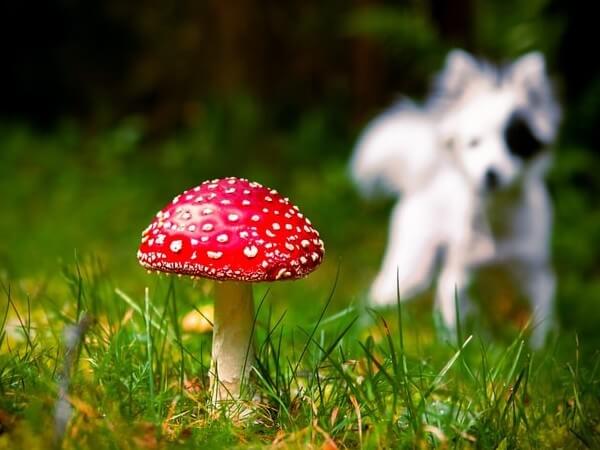
No, dogs should not eat Mushrooms from the yard. To err on the side of safety, it is best that dogs avoid all Mushrooms that are growing in your backyard or under a tree.
So, are Mushrooms that grow in your yard poisonous to dogs? Yes, most likely the Mushrooms that grow in your yard are poisonous to dogs. Most mushrooms that grow in our backyards are considered wild Mushrooms.
Which mushrooms are toxic to dogs?
A list of Mushrooms you can find in your backyard, woods, or the under the trees that are toxic to dogs include:
- Amanitins.
- Amanita phalloides.
- Amanita gemmata.
- Amanita muscaria (Fly agaric).
- Amanita virosa.
- Galerina marginata.
- Gyromitra species (False morel).
- Inocybe species.
- Clitocybe dealbata Mushrooms.
- Lepiota.
- Hallucinogenic Mushrooms.
Any Mushroom that comes from the Amanita, Galerina, and Lepiota genera is considered toxic to dogs.
These wild Mushrooms tend to grow in the damp parts of our yards or lawns and are considered unsafe for doggy consumption.
The same is true for Mushrooms that grow under the trees in the woods. If you’re hiking with your dogs in the woods, mountains, or hills, keep an eye on your furry friends and make sure they are not eating any of the wild Mushrooms.
Are yard Mushrooms bad for dogs? Yes, many of the Mushrooms we find in our backyard, woods, hills, or mountains are deemed unsafe for dogs to eat and some are even considered poisonous or toxic to dogs. Eating any of the wild Mushrooms can potentially put your canine companions at risk of poisoning.
It is safe to say that any Mushroom our dogs ingested from our backyard, woods, or under a tree is considered toxic unless a mycologist or a specialist is nearby to quickly and accurately identify the Mushroom as non-poisonous or non-toxic.
Can dogs get sick from eating Mushrooms in the yard? Yes, dogs can potentially get sick from eating Mushrooms in the yard. Depending on which types of Mushrooms your dog ingested, it can affect how severe the signs and symptoms will be. Let’s discuss this next.
Dog ate Mushroom in yard: Symptoms and signs your dog ate a Poisonous Mushroom
After eating a wild Mushroom in your yard, it can take a matter of 15 to 30 minutes for the toxins to kick in. Within this time frame, your furry friends may start to have an upset stomach. This is one of the most common signs that your pooch ate a poisonous Mushroom.
For some dogs, it may take up to 24 hours to start showing signs of mushroom toxicity.
The signs and symptoms of poisoning can range from mild to severe depending on the types of Mushrooms your canine companion ingested.
Some poisonous Mushrooms from the list above can cause mild symptoms such as an upset stomach.
Other poisonous Mushrooms can cause kidney failure, tremors, liver failure, seizures, ataxia, disorientation, aggression, and even hallucinations. These symptoms occur because your dog’s central nervous system is affected.
There are also poisonous Mushrooms that can cause symptoms such as watery eyes, vomiting, excessive drooling, diarrhea, and frequent urination.
This occurs when the toxic Mushrooms affect your dog’s general organ systems such as the gastrointestinal system and this can cause your pooch to vomit or have diarrhea.
RELATED: How To Soften Dog Eye Boogers?
What to do if your dog eats a Mushroom?
As we can see, dogs can experience a wide range of symptoms depending on which types of Mushrooms they ingested.
If you suspect your four-legged friends may have poisoning from eating the wild Mushrooms in your yard, we highly recommend that you contact your veterinarian right away for treatment advice.
Most of these symptoms require immediate medical attention and the sooner they are treated, the better. Your vet may ask you to bring your furry friend in for a physical check up and so that they can perform some necessary tests.
If you’re not able to reach your dog’s vet, another great option is to call the Pet Poison Helpline at (855) 764-7661.
Many dog owners may try to force their dogs to throw up after learning that their canine friends have consumed Mushroom, however, this may not be a good idea. It’s best not to treat the Mushroom poisoning yourself at home because this type of poisoning requires expert or professional help.
By bringing them to the vet, your pups will be in good hands as to the best course of treatment depending on how severe the poisoning was.
If you’re curious to know which types of mushrooms may be toxic in your backyard, this fungi identification file from the Mycology Club at the University of Minnesota can help.
As the summer rolls around, you’ll start to see more Mushrooms in your yard and this is actually when Mushroom intoxication occurs the most in dogs. From summer to early fall, we recommend that you carefully monitor your dogs while they’re out playing in the backyard.
Our canine friends naturally love to explore the world around them by sniffing and eating everything they come across so it’s our job to keep them away from certain areas of our yard if we know the wild Mushrooms tend to grow there.
DISCLAIMER: THIS WEBSITE DOES NOT PROVIDE MEDICAL ADVICE
The information, including but not limited to, text, graphics, images and other material contained on this website are for informational purposes only. No material on this site is intended to be a substitute for professional veterinary advice, diagnosis, or treatment. Always seek the advice of your veterinarian or other qualified health care provider with any questions you may have regarding a medical condition.

With over five years of specialized experience as an animal writer, my expertise lies in dog nutrition, health, behavior, grooming, and training. I am dedicated to delivering helpful and informative content that caters to the well-being of our furry friends. My primary goal is to empower pet owners with knowledge and ensure our canine companions thrive in health and happiness. In my free time, I love volunteering at local dog rescue centers.
